For an awesome tool to quantify weaknesses, fix those weaknesses, control common aches and pains, and all things recover, check out our new book “No Weaknesses. Check it out here:
The Brand New Mash Elite E-Book: “No Weaknesses”
Whether you want to lose weight, gain weight, or get jacked, check out the “Mash Eat What You Want Program” for all of your Nutrition needs. Check it out today at the link below:
==> The Mash Eat What You Want Program
Improving the Snatch
The Snatch is definitely the most complex movement that one can perform with a barbell. You are basically playing golf with heavy weights. By golf I mean that you can pull the bar as hard as you want, but if you are off an inch one way or the other, you’ll miss every time. The Snatch is where the “just get strong argument” fails miserably.
First let’s look at the elements necessary to perform a Snatch:
• Mobility to catch the bar in an overhead squat position as low as possible with a vertical back.
• Ability to stabilize a heavy barbell in the overhead position
• Solid technique that produces a straight line or slightly s-curve bar path
• A long powerful first pull that accelerates throughout the pull
• An aggressive second pull giving the bar lift
• A third pull that is lightning fast
The first two are initially the hardest elements to acquire. People new to the sport either lack the mobility to get under the bar in a good position, or they lack the strength overhead to stabilize the bar in the catch position. These two elements are the easiest to effect.
Lately, at 43-years-old I have been able to push my Snatch higher and higher. I only max out once every 1-2 months, and mainly I just practice the movements with several sets of EMOMs (every minute on the minute). So far, I have snatched 135k/297lb. I did that pretty easily without any misses, so I know that I am good for more.
I credit my squat every day program for these results. Part of my squat every day plan is an overhead squat variation 3-4 times per week. Both the squats and overhead variations have helped my mobility, stability, and speed. Most of you don’t realize that in 2007 I fractured a vertebra in my cervical spine that has really caused stability issues on my left side. My radial nerve was left damaged, so holding anything with my left arm is challenging.
The overhead squats have increased my overhead stability greatly. Here are some of the variations that I have used:
• Overhead squat with 3-5 second pauses in the bottom
• Snatch Push Press to OH Squat
• Snatch Grip Thruster to OH Squat
• Snatch balance
• Snatch balance to OH Squat paused
A lot of people want to fix Snatch mobility with lacrosse balls and voodoo bands, but that is not the answer. If you want to get better at a movement, perform the movement. The body is amazing at adaptation. The body will get better at performing any movement that one does frequently. When the body is familiar with a movement, it will release tight muscles and recruit extra fibers to allow for movement. A lot of tightness that one experiences when trying to perform new movements is the body’s response in an attempt to protect itself. Basically the body is limiting the range of motion to prevent injury because it isn’t familiar with the movement.
I am not saying that mobility work won’t help. Mobility work is a great way to prepare for the performance of any movement. I am just saying that the actual performance of the movement pattern on a frequent basis is more important. Mobility work with frequent performance is the best option.
This pic shows the neck, traps, and back required to snatch big weight:
Developing a stable base like this requires lots of hard work. Snatching along with the Overhead Squat Variations is a great way to develop stability. Here are some other great assistance exercises that will help you build your stability in the Snatch:
• Snatch Grip Push Press
• Snatch Grip Strict Press
• Muscle Snatch
• Sotts Press
• Axle Bar OH Carries
• Kettlebell or Dumbbell OH Carries
• Plate Raises
• Plate Lateral Raises
• Pull-Ups
• Rows
• Upright Rows
• Dips
Technique in the Snatch or Olympic weightlifting in general is one of the most controversial topics on the planet, so I am going to stick with the basics that we can all agree upon.
Start position:
• Shoulders on top of the bar
• Arms long and relaxed with elbows turned out
• Shoulders should be above the hips
• Back should be tight
• Scapula tucked together and down
• Slight arch in the low back
• Feet should be about hip width
• Weight distributed on the ball to middle of the feet
• Eyes looking straight ahead and slightly upwards
During the first pull:
• Shoulders and hips rise at the same time maintaining the same angle
• Knees move out of the way of the bar
• Bar should move in a straight line up or slightly back. (Never forwards)
• Maintain the eyes looking straight ahead and slight upwards
• This movement is more of a push with the feet into the floor
• Shoulders stay over the bar for as long as possible.
• This is a patient long pull
During the second pull:
• The bar is swept into the hips by squeezing with the lats
• The hips meet the bar for a scoop upwards. This is not banging the hips into the bar.
• Shoulders move slightly behind the bar.
• Hips and knees aggressively extend at the same time propelling the bar upwards.
• This is an explosive and aggressive movement.
Third pull:
• Constant pulling of the bar takes place throughout the pull, and the third pull is no exception
• The best athletes rip themselves under the bar into the receiving position.
• Lift the knees to move the feet slightly out to a shoulder position.
• Lifting the knees will remove the feet slightly from the floor allowing the athlete to move even faster
Here is a diagram of all three pulls:
All of these pulls should be practiced and perfected. The best way to get better at Snatching is to Snatch. You can also do position pulls, which is simply Snatch Deadlifts focusing on maintaining the positions. However, to get better at Snatching one has to snatch.
Here are some ways to improve the first pull with the Snatch:
• Pauses two inches off the ground will help you get the start position right, and they will help you maintain the proper posture off the floor. FYI most lifts are missed right off the floor.
• Pauses at, below, and above the knee will ensure that you are staying over the bar and maintaining the angle of the shoulders and back. They will also teach you to generate speed from the knees and up to ensure proper acceleration
• Tall Pulls are great for staying over the bar. This is where you perform a Snatch Pull staying over the bar until the bar is at mid thigh or higher. This is an exaggeration that will teach a long first pull
Keys to improving the Second Pull:
• Pulls from High Blocks are great for teaching aggressive second pulls. You have no momentum from the first pull, so the finish has to be aggressive.
• Hang Snatch from hips teaches the same thing.
• Slow first pull to aggressive finish will teach one to finish aggressively and to be patient in the first pull.
Third Pull:
• High Blocks and Hangs from hip also help the third pull. Once again there is no momentum with the first pull, so one must rely on an aggressive second pull and then speed underneath.
• Tall Snatches- I learned these from Coach Chris Wilkes. Basically these are done with fairly lighter weights, and they start with the bar held standing upright. There is no bend of the knees, and the athlete simply pulls himself or herself under the bar.
• Practicing the Snatch
• Learning to visualize and not think. Thinking is too slow.
• No hook and no feet is a great way to teach speed underneath and to ensure a proper bar path. If you bang the bar with your hips, the bar will leave the hands.
Snatch Deconstruction is another thing that I learned from Coach Wilkes. Basically snatch deconstruction is a way of breaking the snatch down into all of its complicated elements, and then putting it back together again. Here’s an example:
1. Perform Position Snatch Pulls- During this phase really focus on the positions and movement of the snatch pull. It’s not about the weight that you are using. It’s about the way that you are performing the movement. The goal is to hit all of the positions that I talked about earlier. I would stay around 80-85% performing 5 x 3 perfect snatch pulls.
2. Tall Snatches- We talked about this a little earlier. In this section you are going to practice the third pull or the pull under the bar. Once again you are going to want to stay light and perform multiple sets and reps.
3. Snatch Balance- In this section you are going to practice driving under the bar aggressively into a perfect catch position.
4. Snatch- now it’s time to put it all together.
Let’s talk about visualization a little before moving on. Wes Barnett taught me this a long time ago. The best way to use visualization is to face the bar about five paces away. Then the athlete will shut their eyes and see the perfect snatch. Then walk up to the bar and pull it as hard as possible. Trying to think while Snatching will inevitably slow you down.
The Snatch is a complex movement. To get good at Snatching one has to snatch. Period! An athlete should start by building that stable base and learning the movement properly with an empty bar or PVC pipe. Once the movement and the stability is there, then the athlete should be snatching as often as possible.
For the duration of your career you will be practicing the Snatch, developing stability, and increasing strength. It is one big game of chess requiring a balanced approach. I hope this article will help shed some light on this technical movement that we all call the Snatch.
Guys and gals, if you want a tool that will help you along your fitness path, I would be honored if you checked out the brand new “No Weaknesses” E-Book. For more information, click on the link below:
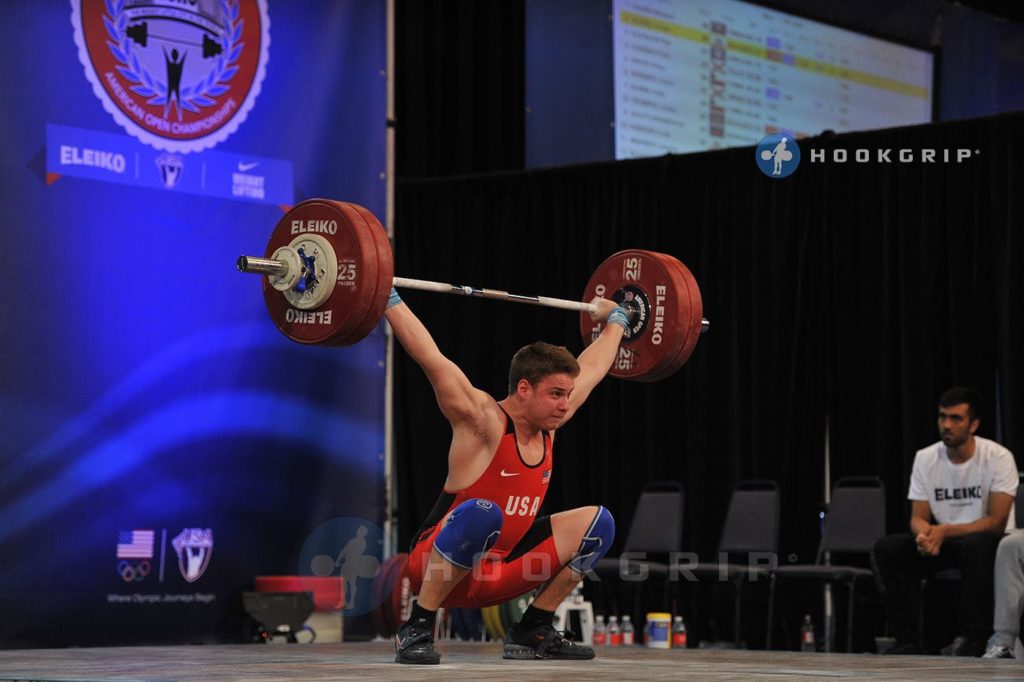
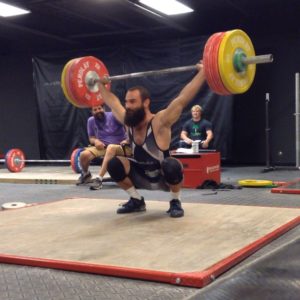
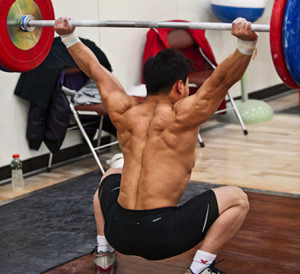
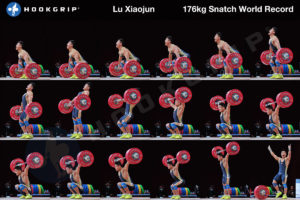
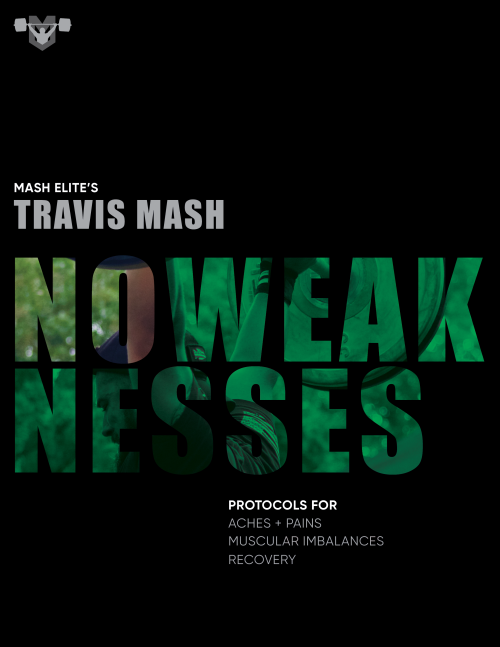
Great article and well written, but i have to take exception that the finish of the 2nd pull has to be aggressive and explosive for people learning to snatch.
Of course in the end you need a lot of speed on the bar and that requires pretty big muscle contractions. But and here’s the thing, it seems to be that American lifters are out of control with the finish of the 2nd pull – there are still many in the top ranks who bang it off their hips and lose control of the bar, heaps. To figure out how to pull yourself under the bar in a precise manner you have to finish slowly and then speed it up as you get more confident. Is there any american lifter who lifts with technique like Daniyar from Turkey? No there isn’t. None like Taner Sagir of Turkey either – that smooth finish and then control in the 3rd pull (i call it transfer). I think young Luis from Columbia is the best example – but you wont see anything like that come out of the states, because too much emphasis on power position and aggressive finish.
American lifters have a massive influence on the global crossfit community, but the technique is not what it is in the euros and asian countries. Its a whole level down, although i can see improvements in the junior ranks coming up.
I’ll accept that this is an arrogant rant and many will interpret as such, but the proof just isn’t in the pudding, you guys have some strong lifters coming through and they are near as strong as any of the juiced up euros, but you’re gonna get beat by lifters who are just better at lifting and thats a shame because we need USA to be better.
Once again, great article, but i still think you guys over there are missing the point.
Terry Hughes
ps give young Don McCauley a hug from me 🙂